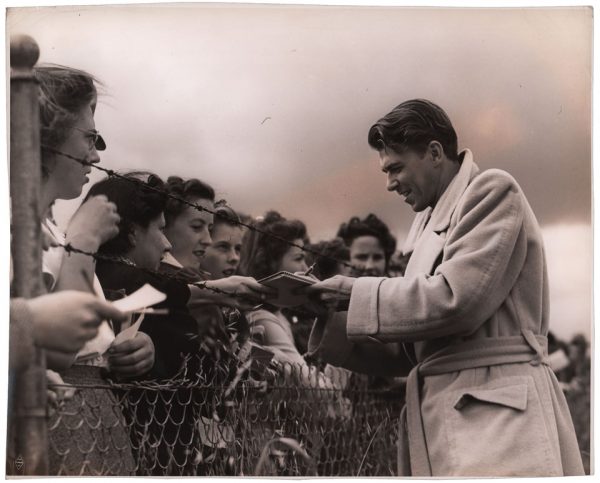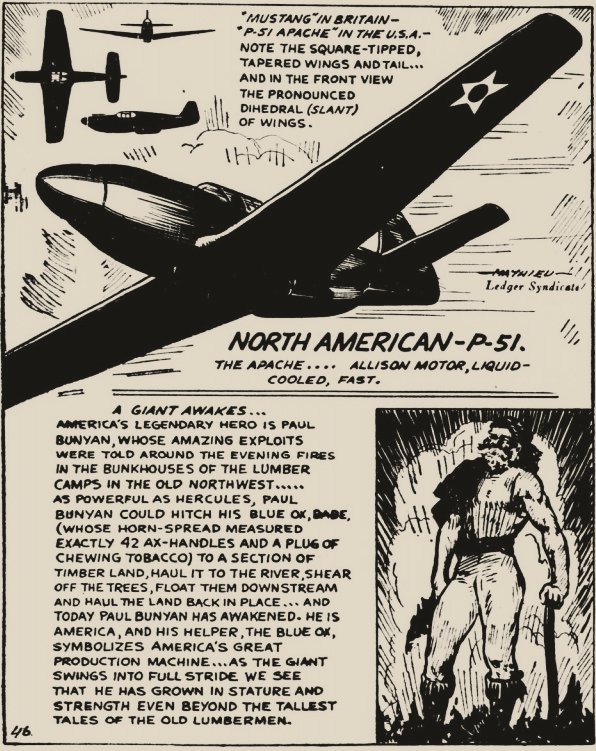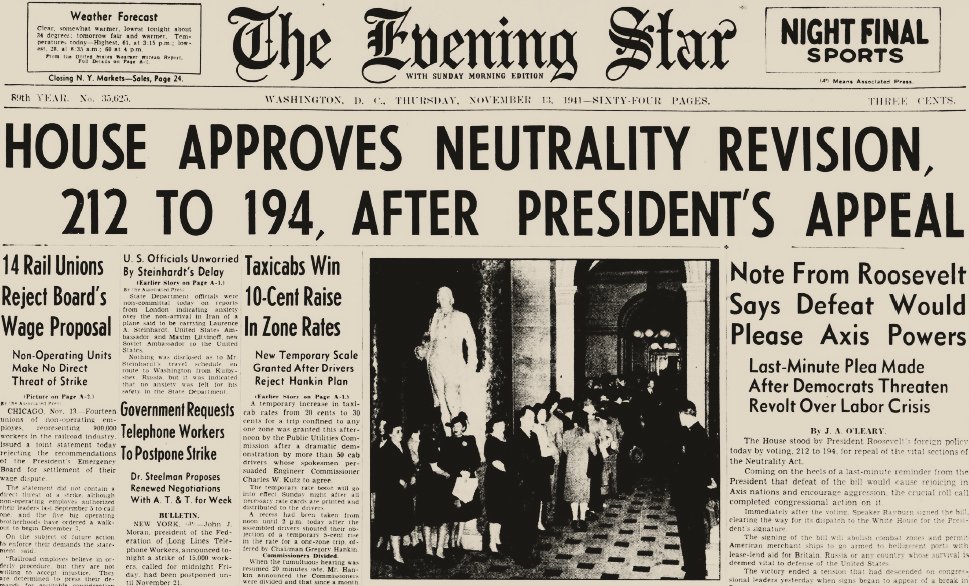World War II Chronicle: November 13, 1941
Click here for TODAY’S NEWSPAPER
On today’s front page: 11 elephants have died — apparently from arsenic poisoning. The loss of these majestic animals is sad, but Barnum & Bailey took a substantial financial hit, as the elephants are valued at over $10,000 apiece. To this day the mystery remains unsolved… Page seven reports sightings of large Japanese fleets massing off the coast of French Indochina (Vietnam) and near Hainan Island… On page 15 George Fielding Eliot says the British could thwart potential Japanese operations at Singapore by sending just six ships. With the United States Navy helping out in the Atlantic and the sinking of Bismarck he thinks they can spare the vessels…
Page 25 features a advertisement for International Squadron, starring Ronald Reagan. He plays a “lovable, laughing, reckless” American pilot flying for the Royal Air Force (RAF)…

Curtiss-Wright’s new P-40F reportedly will carry something like 15 guns and fly at nearly 400 miles per hour (see page 35). Large numbers of the warplane are being constructed for the RAF… Sports on page 58, and the Dodgers know they’ll need to shop for more talent if they plan on competing with the St. Louis Cardinals next season…
P-51: Mustang or Apache?

Page 56 has a look at the North American Mustang as it was just entering service with the Royal Air Force. Mk I Mustangs began arriving in Great Britain in October and won’t enter service until January 1942.
But you may wonder: why did the illustrator use the nickname Apache? 80 years ago today the very first production models of the P-51 were still rolling out of the factory at Inglewood, Calif. It was a brand-spanking-new aircraft, and they hadn’t completely settled on a nickname. In fact, the United States Navy had only decided to assign names to their aircraft in October 1941 (the F4F “Wildcat” was just known as the F4F prior to that). North American’s P-51 went by both Apache and Mustang until they settled on the latter.
But there was soon to be an A-36 Apache, which was an attack version of the P-51 with bomb pylons and dive brakes. Funding for fighter production was quickly exhausted in early 1942, but the War Department still had funding available for attack aircraft. So to keep North American production rolling, they added bomb pylons and dive brakes to the P-51. That airplane became the A-36 Apache, but also went by Invader and Mustang. Click here for an old film on the A-36.
Evening star. (Washington, D.C.), 13 November 1941. Chronicling America: Historic American Newspapers. Lib. of Congress.
https://chroniclingamerica.loc.gov/lccn/sn83045462/1941-11-13/ed-1/
